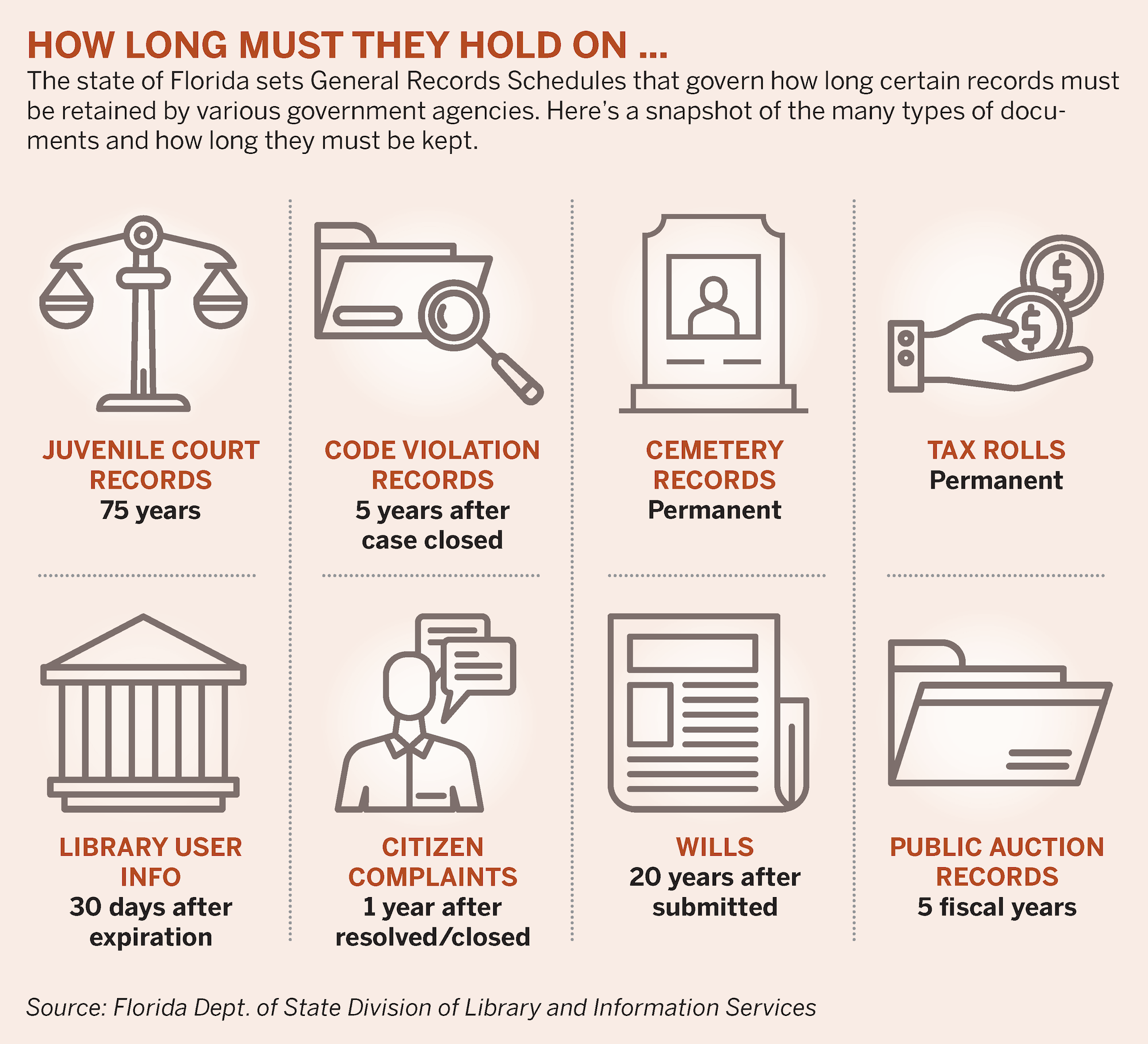- May 1, 2025
-
-
Loading

Loading
Among Sarasota County government’s pipeline of capital improvement projects is a new building of up to 35,000 square feet to serve as storage and eventual destruction of legal documents maintained by the office of the Clerk of Circuit Court and County Comptroller.
At $25 million, that’s upwards of $735 per square foot to build.
But why build new, at today’s runaway construction costs, when opportunities to acquire and upfit an existing building with warehouse and office space at a fraction of the cost?
That was the question raised by County Commissioner Neil Rainford on Thursday during last week’s three-day budget workshop, one that was provided partial clarity during a presentation by Karen Rushing, who runs that office, the next day. The matter came up during a discussion about the county’s capital improvement program, which included a new 30,000- to 35,000-square-foot building at 1301 Cattlemen Road.
In raising the issue, Rainford pointed out, purely as an example, that a quick search of a commercial property website revealed a 34,000-square-foot warehouse with office space in North Port available for sale at $7.5 million, or $213 per square foot. That sparked a larger conversation about whether county staff should place a greater emphasis on exploring the market for existing buildings when considering replacement or expanded space for county departments operating in aging and outdated structures.
“I've been saying for a couple of months now that we're at a time when our construction and building costs are soaring, and on the other side of that commercial buildings and offices are out of favor,” said Commissioner Ron Cutsinger. “There's an opportunity, I think, to do a really thorough investigation of what is available on the market already.”
It’s not that simple, Rushing told commissioners on Friday, who while conceding that she supports the commissioners’ frugality, said the new building must be within a 5-mile radius of the courthouse in downtown Sarasota and must be hardened to withstand severe weather events given the sensitive nature of the papers. It also must have workspace because it’s more than just a storage building. It also houses five employees whose task is not only storage and moving evidence into and out of the building, but marking documents for destruction once they pass their requisite lifespan.

For example, documents from a juvenile case must be stored for 75 years before being destroyed, Rushing said. Wills must be stored for 20 years. As more documents arrive from the offices of law firms and the courthouse, there is no longer adequate space to store them.
Rushing provided a reality check to the commissioners’ thoughts about delaying the new records storage and destruction building as the county explores other options, which admittedly, because of the unique needs, would likely require additional investment in improvements. But she did admit that because more legal documents are now being digitized, eventually the demand for storage of physical papers will wane.
But not yet.
“Are we going to run out of room based on what's happening at the present, or are we keeping pace with destruction versus the amount of records we're adding?” asked Cutsinger.
“I can't give you specific numbers, but papers coming in are not at the rate that are being stored at this moment. That's about as specific as I can be,” Rushing replied. “There is there is a delta where you won't continue to need space, but I don't want to violate the fire code.”
Heading toward a decision to pause the new building, Rushing was asked how many employees she would need to onboard to keep up with the workflow. Double the current team of five, she responded, a cost that would cut into any possible savings by approximately $240,000 per year.

“If I have the people I'll move (files) out faster. That I can tell you for sure,” Rushing said. “I guess the question is, how long can we pause? I can't really tell you that specifically, but I will get the numbers for you.”
Convinced scouting the market warrants a delay, the new legal documents warehouse was stricken from the fiscal year 2025 CIP by unanimous vote. The motion did not address the potential additional personnel needs of the Clerk of Circuit Court’s office in the interim.
All that left County Administrator Jonathan Lewis pondering the impact on the budget. On Thursday, he was tasked by commissioners to build the budget around a millage rate of 3.30, or a $4.4 million trim from the requests of departments controlled by the commission.
“Are you telling me to cut an additional $240,000 from my budget?” Lewis asked. “Are you changing the millage rate you did yesterday?”
That question went unanswered as the commission moved on to the next agenda item.